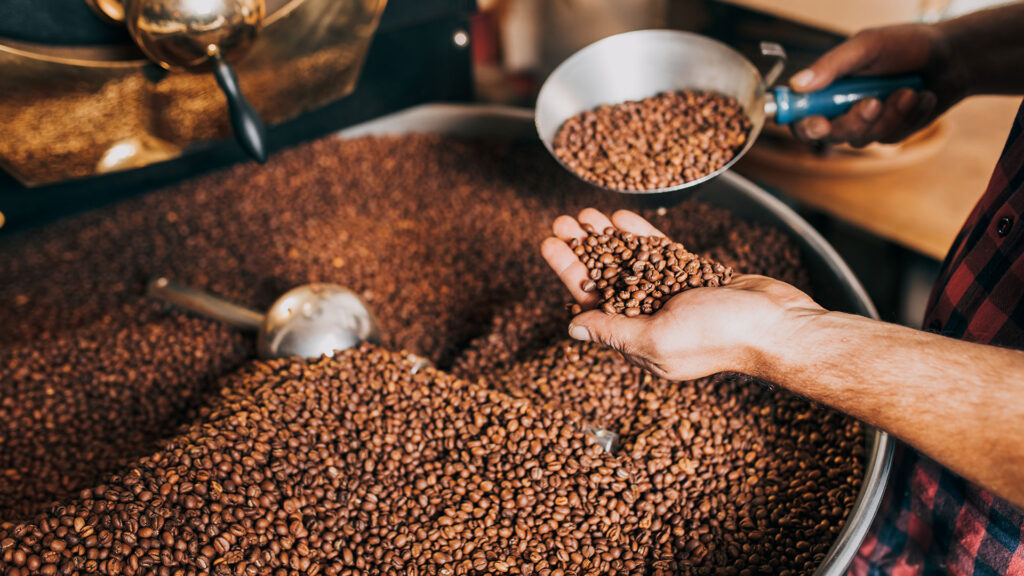
Most of us heard that “processed foods are all bad” from our parents in childhood. But research says processed foods aren’t all bad. There are lots of process methods that not only make our food tasty but also make our food healthy. The coffee roasting process is one of them.
Coffee roasting is a heating process of coffee beans. It is used for transforming cherry seeds or green coffee beans into brown, aromatic, and flavorful coffee beans.
From the beginning to the end of this roasting journey, specialized equipment plays an important role. One of the most important tools is the coffee needle distributor. This device is designed to ensure all the beans get heated properly.
Now, let’s delve into the art and science behind coffee roasting.
What Is The Basic Process Of Coffee Roasting?
Coffee roasting is a process that makes coffee beans taste and smell good. This process started with green dried beans. At first, we heat these dried beans from 180 to 250 degrees Celsius (356 to 482 degrees Fahrenheit) for 7 to 20 minutes.
It depends on the bean’s darkness. Here’s a simple table that explains the names of roasts and colors for coffee lovers.
| Roast color | Common names | Agtron Numbers | Bean surface | Notes |
| Light brown | LightCinnamonNew England | 80 – 70 | Dry | Generally it used cheap commercial blends including sour and grainy taste. |
| Medium brown | MediumAmericanRegularCityBrown | 70 – 50 | Dry | It has a natural and strong tasteful flavor. Most Americans traditionally like it in their coffee. |
| Medium-dark brown | VienneseFull-cityLight FrenchEspresso | 50 – 40 | Dry to tiny droplets | It has a test mix of bitter and sweet. Not strong like the previous one. Most of the west like this type of coffee. |
| Dark brown | FrenchEspresso | 40-35 | Shiny surface | It is also the same as the previous one. But it’s not taste very tangy. Moreover, this roaster usually does in the West and Southwest. |
| Very dark brown | ItalianDark French | 35-30 | Very shiny surface | You can get a little bit of original coffee flavor from this roasting process. |
| Black-brown | Dark French | 30-25 | Shiny surface | This roast removes all the unique taste of green coffee. You can feel a very thin and very faint flavor in your mouth including a strong taste of sweet. |
While we are roasting coffee beans, they release steam, carbon dioxide and other things. Yummy coffee smells are the most important part of coffee roasting and it comes from lots of chemical changes inside the beans.
Coffee Roasting Process
There are many types of stages for the coffee roasting process. Things to remember, coffee needle distributor helps you to do that a lot. Also, every stage is very important for the roasting process. From picking green seeds and turn into different types roast.
- Drying or Yellowing: This process is the foundation for roasting. If you select wet seed for this stage you can quickly do this roasting.
- Maillard Reaction: At this stage beans turn brown and change color like a bread baking process.
- First Crack: At this stage, beans break down inside for the heating process.
- Second Crack: At this stage, beans turn dark. Most people like this kind of coffee. But it is not as trendy as it used to be.
- Carbonization: This is the final process where coffee beans break down properly inside. It’s kind of like a fire hazard because of its hotness.
FAQ’s
What are the advantages of roasting?
There are so many advantages of roasting. Minimizing loss of vitamin C, retaining more B vitamins, and making the food more delicious are the most important part of roasting.
What is the real meaning of roasting?
The real meaning of roasting is cooking food in an oven or over fire.
What are the three coffee processing methods?
The natural or Dry Method, the washed or Wet Method, and the pulped natural method are the three common coffee processing methods.
Which method is best for coffee?
The Wet or washed method is best for coffee.
Final Words
To sum up we can say that though “processed” might sound bad but Coffee roasting process is a fascinating blend of art and science.
We see the different types of roasting, its color, common names, agtron Numbers, and bean surface. We also talk about each part of the coffee roasting process.
Each stage brings out different flavors and aromas. So, when you enjoy a cup of coffee, remember, it’s all thanks to the roasting process.